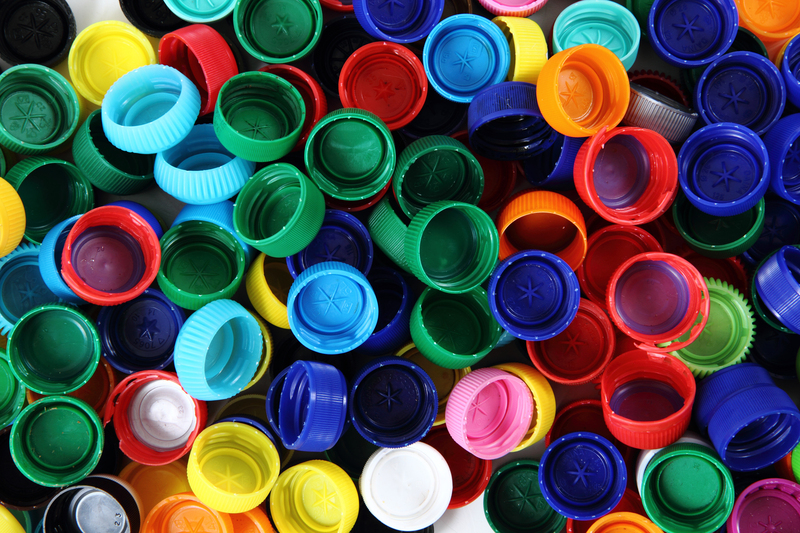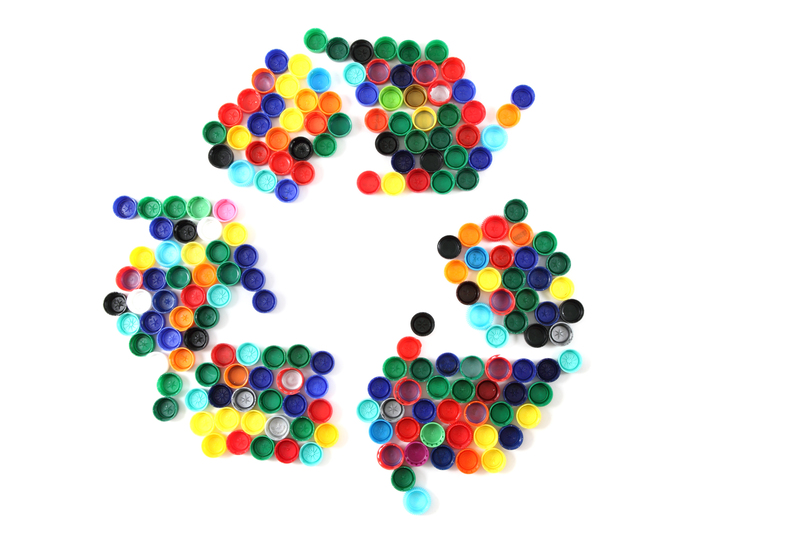Eco-Friendly Upcycling Projects That Add Personality to Your Home
Looking for creative ways to refresh your living space while minimizing your environmental impact? Eco-friendly upcycling projects offer a unique solution for adding personality, charm, and sustainability to your home. This comprehensive guide explores innovative upcycling ideas, benefits of eco-conscious decorating, and practical tips to transform everyday items into beautiful, functional pieces. Discover how you can turn trash into treasure and give your home a distinctive, eco-chic makeover.
What is Upcycling and Why is it Important?
Upcycling refers to the process of transforming discarded materials or products into new items of higher quality or value. Unlike recycling, which often breaks down products into raw materials, upcycling retains much of the original material's integrity. Its rise in popularity is tied to growing environmental awareness and the desire for unique, personalized home decor.
- Reduces landfill waste: Diverts usable materials from the trash.
- Conserves natural resources: Extends the life of products and materials.
- Sparks creativity: Encourages out-of-the-box thinking.
- Personalizes interiors: Creates one-of-a-kind conversation pieces.
- Saves money: Reuses items you may already own or can source inexpensively.

Getting Started with Upcycling at Home
*Before you begin,* evaluate what you have. Take stock of unused, damaged, or outdated household items--such as furniture, jars, fabric, or pallets--then match them with your DIY skill level. Upcycling can range from simple crafts to more advanced woodworking or upholstery.
Essential Supplies for Upcycling Projects
- Tools: Scissors, glue gun, paintbrushes, sandpaper, drill, screwdriver, sewing machine (optional).
- Materials: Leftover paints, fabrics, rope, old jars, wooden pallets, bottles, baskets, tins, and more.
- Hardware: Hinges, screws, handles, or hooks for customizing finishes.
- Protective gear: Gloves and masks, especially when sanding or painting.
Top Eco-Friendly Upcycling Ideas for Every Room
1. Transform Wooden Pallets into Stylish Furniture
Wooden pallets are one of the most versatile and widely available items for sustainable upcycling. Resilient, rustic, and budget-friendly, they can be repurposed into a wide variety of home furnishings:
- Pallet Coffee Table: Add castors to the bottom of a sanded pallet, finish with a coat of eco-friendly wood stain, and place a glass top for a chic centerpiece.
- Vertical Plant Wall: Secure a pallet to a wall, fill with pockets of soil, and plant trailing greenery for a vibrant, living decor element.
- Outdoor Seating: Stack pallets, cover with weatherproof cushions, and create an inviting garden lounge.
2. Upcycled Glass Jars and Bottles for Creative Storage
Glass jars and bottles are perfect candidates for upcycling because they're sturdy and recyclable. Clean them thoroughly and give them a second life as:
- Kitchen Storage: Store grains, spices, or snacks. Add a chalkboard label and some twine for a farmhouse look.
- Vase Arrangements: Paint or etch your bottles to serve as striking vases for wildflowers or dried bouquets.
- Bathroom Organizers: Attach jar lids to the underside of a shelf for easy-access organization of cotton buds, bath salts, or hair accessories.
3. Vintage Suitcase Chairs and Storage Solutions
Don't throw out that old, battered suitcase! Repurpose it into functional furniture or stylish storage:
- Suitcase Side Table: Attach vintage legs or a sturdy wooden base to a hard-shell suitcase for a retro-inspired side table with hidden storage.
- Pet Bed: Cushion an open suitcase for a quirky, travel-themed bed for your furry friend.
4. Upcycled Fabric and Clothing Crafts
Breathe new life into unused textiles and garments by turning them into practical, eye-catching decor. Try these green upcycling craft ideas:
- Quilted Throws: Stitch together scraps of colorful fabrics or old shirts for a cozy, textured blanket.
- Rag Rugs: Braid together strips of fabric to form cushiony, handmade rugs.
- Embroidered Pillow Covers: Embellish old pillowcases or faded tees with embroidery, patches, or applique.
5. Tin Cans Reimagined: From Containers to Candle Holders
Reused tin cans are perfect for both indoor and outdoor projects. Here are some imaginative ways to give them new life:
- Desk Organizers: Stick wrapping paper or paint on cans. Group various sizes for pens, brushes, and supplies.
- Hanging Lanterns: Punch holes in artistic patterns, insert a candle or LED, and hang them to cast beautiful shadows.
- Planters: Add drainage holes, paint in bright hues, and use as cheerful containers for herbs or succulents.
6. Doors and Windows as Room Dividers or Headboards
Old doors and window frames make spectacular statement pieces:
- Room Divider: Hinge together several doors to divide open-plan spaces or create privacy areas.
- Decorative Headboard: Mount a repurposed door or window above your bed as a unique headboard; paint or distress for added character.
Eco-Friendly Upcycling for Outdoor Spaces
Clever Garden Upcycling Projects
- Bathtub Planters: Salvage vintage tubs as raised beds for flowers or veggies.
- Old Tire Swings: Paint and suspend used tires for playground fun or create eye-catching planters.
- Wine Cork Mulch: Shred discarded corks to use as a biodegradable alternative to traditional mulch.
Benefits of Sustainable Upcycling Projects
- Environmental Impact: Upcycling keeps waste out of landfills and reduces the demand for new products, lowering your carbon footprint.
- Cost Efficiency: Many upcycling projects use free or low-cost materials, saving money on home decor.
- Unique Style: No two upcycled items are alike, ensuring your home feels truly personal.
- Educational Value: Upcycling teaches practical skills, resourcefulness, and environmental stewardship for all ages.
- Community Building: Upcycling projects can bring households and neighbors together through shared workshops and innovative exchanges.
Tips for Successful Upcycling
- Start small and simple. Choose projects that match your skill level to build confidence.
- Use eco-friendly materials. Opt for natural finishes, water-based paints, or non-toxic adhesives whenever possible.
- Research techniques. Online tutorials and upcycling communities offer inspiration and troubleshooting advice.
- Prioritize safety. Wear protective gear and work in well-ventilated areas, especially when working with solvents or power tools.
- Keep an open mind. Allow for creative mistakes--they often lead to surprising results!
Upcycling Inspiration: Creative Case Studies
The Bookshelf Ladder Project
A local designer transformed a well-worn wooden ladder into a rustic bookshelf by simply sanding, applying a coat of wax, and fixing reclaimed wood planks between the rungs. The result: a practical, eye-catching storage solution that adds character and sustainability to any living room.
Light Fixture from Old Kitchen Utensils
Instead of discarding mismatched cutlery, a creative homeowner suspended spoons, forks, and whisks from a salvaged wire basket. Fitted with a bulb kit, this "utensil chandelier" became the conversation starter of the kitchen.
Mason Jar Wall Sconces
A pair of mason jars mounted to upcycled barn wood, combined with simple LED lights and a bit of wire, produced soft, rustic wall sconces that complement entryways, bathrooms, or reading nooks.
Where to Find Upcycling Materials
- Thrift Shops & Flea Markets: Hunt for secondhand treasures at local stores.
- Community Swaps: Attend neighborhood swap events for furniture, textiles, or decor.
- Curbside Finds: Watch for furniture or homeware set out for disposal--ask permission before taking.
- Online Marketplaces: Platforms like Freecycle, Craigslist, or Facebook Marketplace often feature "free" listings.

Eco-Friendly Upcycling FAQs
Is upcycling better than recycling?
Yes, in many cases: upcycling adds value by repurposing existing materials without the energy-intensive processes required by recycling. Both are important for a circular economy, but upcycling reduces resource consumption and infuses creativity and personalization into home decor.
Can upcycling be profitable?
Absolutely! Many artisans and hobbyists sell eco-friendly upcycled furniture or decor online and at local markets. With the rising demand for sustainable home goods, unique upcycling pieces often command premium prices.
What are the eco-friendly benefits of upcycling furniture?
By reusing timber, metal, and textiles, you reduce the need for new resources and avoid chemicals or emissions associated with manufacturing new furniture--helping both the environment and your wallet.
Conclusion: Express Your Style Sustainably
Eco-friendly upcycling projects go far beyond saving money--they tell your story, reduce your ecological footprint, and add undeniable personality to your home. Whether you're repurposing furniture, jars, fabric, or salvaged materials, these projects allow you to express your creativity and environmental values.
So, gather your discarded treasures, unleash your imagination, and embrace the beauty of sustainable upcycling. Not only will your space stand out, but you'll also inspire others to join the movement--one upcycled creation at a time!
Ready to Start Your Next Eco-Friendly Upcycling Adventure?
Take a look around your house today and see what hidden gems you can resurrect. Your eco-chic, personalized home is just an upcycling project away.